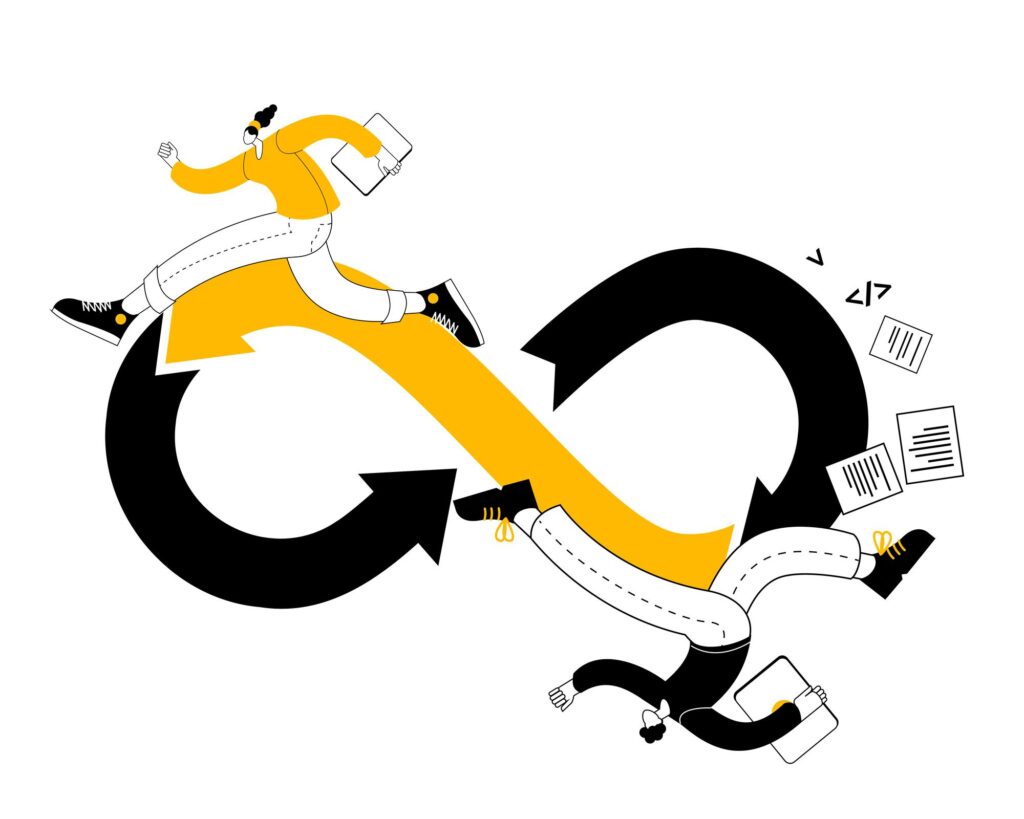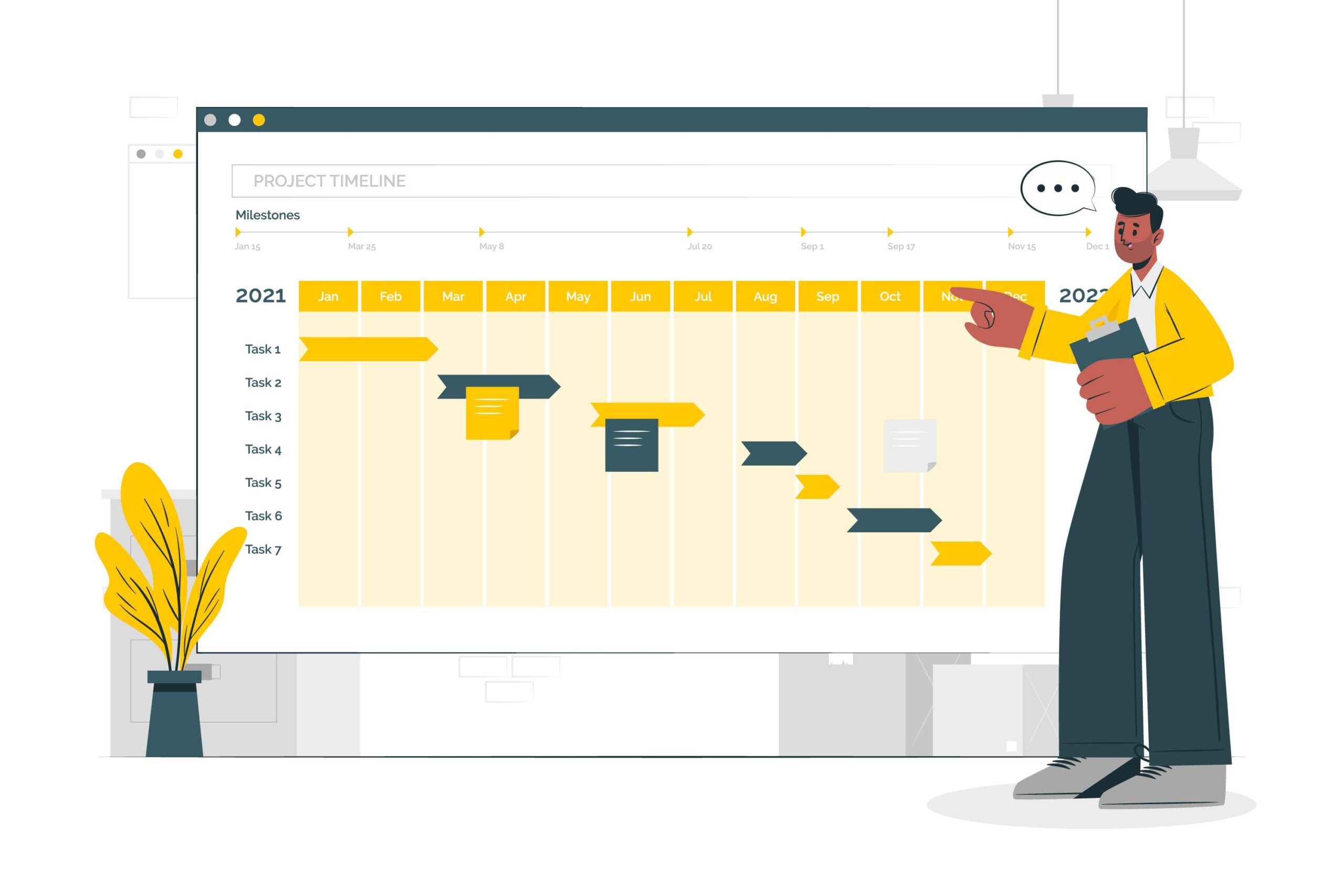Agile Release Trains (ARTs) are revolutionizing how organizations scale agile by bringing multiple teams together under one common mission.
In essence, an ART is a long-lived, cross-functional ensemble that continuously delivers value—an integral part of the SAFe framework. This approach not only streamlines planning and execution but also boosts collaboration, productivity, and predictability.
In this blog, you’ll explore the core principles, key roles, and essential events that make ARTs so compelling, along with best practices to ensure their success. Get ready to dive into a guide that will help you harness the power of ARTs to transform your organization’s agile journey.
What Is an Agile Release Train (ART)?
Imagine an Agile Release Train (ART) as the heartbeat of a modern organization—a well-oiled, synchronized system where several agile teams work together like the parts of a finely tuned engine.
At its core, an ART is a long-term, cross-functional group that delivers work on a fixed schedule known as a Program Increment (PI), usually spanning 8 to 12 weeks. This steady cadence helps teams plan and execute with precision and builds a predictable rhythm into project delivery, making it easier for managers to track progress and adjust as needed.
Research shows organizations embracing agile practices can boost productivity up to 62%1 With ARTs, teams are aligned around common goals and coordinated through regular planning sessions, which enhances transparency and accountability.
This approach creates a work environment where every team member knows their role and feels empowered to contribute to a collective success. It also fosters a culture of continuous learning, where frequent retrospectives and feedback loops ensure that improvements are always on the horizon.
Moreover, ARTs help break down silos and encourage cross-department collaboration, which can lead to higher employee engagement and retention—a key metric for any HR manager.
▶️For more practical strategies on boosting efficiency, check out our Agile Project Management blog, which dives deep into agile best practices that complement ART implementations.
Key Characteristics and Principles
1. Dedicated People
ARTs aren’t just random groups of employees thrown together. They are carefully structured, cross-functional teams—usually between 50 to 125 people—who commit to working together over the long haul.
This stability fosters deeper collaboration, clearer communication, and a stronger sense of ownership over projects. When people know they’re part of something bigger, engagement and accountability naturally increase.
2. Synchronized Cadence
Imagine an orchestra where every musician plays at their own pace—it would be chaos. ARTs solve this by working on a fixed schedule known as a Program Increment (PI), typically lasting 8 to 12 weeks. This regular rhythm keeps teams aligned, removes the guesswork, and ensures deliverables are predictable and manageable.
▶️Discover how scaling agile with proven tactics can lead to impressive productivity gains in our Scrum Project Management post.
3. PI Planning – The Secret Sauce
Every successful ART kicks off with a two-day PI planning session where teams come together to map out goals, align priorities, and identify potential roadblocks. It’s a high-energy, face-to-face (or virtual) event that sets the foundation for success. This level of clarity helps teams stay on track and reduces miscommunication, which is often a productivity killer.
4. Innovation and Planning Iteration
Agility isn’t just about speed—it’s also about staying ahead of the curve. Every PI includes dedicated time for teams to innovate, experiment, and refine their processes. Whether it’s testing new technology, optimizing workflows, or brainstorming creative solutions, this ensures that ARTs don’t just meet expectations—they exceed them.
▶️If you’re interested in learning more about continuous workflow improvements, read our detailed guide on Kanban Project Management.
5. Inspect and Adapt – Learning as You Go
At the end of each PI, teams hold an “Inspect and Adapt” session, essentially a structured retrospective. What worked? What didn’t? What can be improved? This continuous feedback loop helps teams fine-tune their approach, ensuring that every cycle is better than the last. It’s a game-changer for fostering a culture of growth and accountability.
6. Develop on Cadence, Release on Demand
Even though ARTs follow a structured cadence for development, they don’t force releases on a fixed schedule. Instead, teams release updates when the market or business needs them, ensuring flexibility while maintaining discipline in execution. This keeps customers happy without overburdening teams.
7. Organized Around Value
At the end of the day, Agile is about delivering value—not just checking off tasks. ARTs are structured around value streams, ensuring that every effort, every sprint, and every deliverable contributes directly to customer satisfaction and business goals. This alignment between execution and strategy is what sets high-performing ARTs apart.
ART Structure, Roles, and Responsibilities

Imagine the Agile Release Train (ART) as the backbone of your organization—a finely tuned orchestra where every agile team plays its part in harmony. In an ART, teams are organized into one cohesive unit that works on a predictable, fixed schedule, typically through Program Increments (PIs) lasting 8 to 12 weeks. This structured rhythm creates clarity, ensures everyone is aligned with strategic business goals, and makes it easier for the entire organization to move forward together.
Key Roles and Their Responsibilities
Product Manager – Vision and Roadmap Owner: The Product Manager is your go-to visionary. They own the product roadmap and ensure that every feature aligns with customer needs and business strategy. By constantly refining priorities based on market feedback, they keep the ART focused on delivering real value.
Release Train Engineer (RTE) – Facilitator and Coach: Think of the RTE as the conductor of this agile orchestra. Their job is to facilitate ART events, remove obstacles, and coach teams to stay on track. With effective RTEs, organizations often see productivity boosts. They help maintain a smooth workflow and foster a culture of continuous improvement.
System Architect – Technical Guidance and Oversight: The System Architect is the technical compass of the ART. They ensure the overall architecture is scalable and robust, providing clear guidance that aligns every team’s work. This role is crucial for preventing technical debt and ensuring the system can evolve over time.
Business Owner – Strategic Alignment and Decision-Making: Business Owners are the strategic bridge between the ART and the organization’s broader goals. They participate in planning sessions and demos, offering insights and making key decisions that ensure the work directly contributes to long-term business success.
▶️For a strong foundation, explore our Project Management Fundamentals guide
Supporting Roles
- Scrum Master: Coaches individual teams in agile best practices, facilitating daily stand-ups and sprint planning to keep momentum high.
- Product Owner: Works closely with the Product Manager to manage team backlogs and translate high-level priorities into actionable tasks.
- Team Members: The heart of the ART—developers, testers, UX designers, and more—who bring ideas to life by building, testing, and delivering incremental value.
- Epic Owners: Manage larger strategic initiatives that span multiple sprints, ensuring that big-picture projects stay on track.
- System Team: Supports integration and continuous testing, ensuring all components fit together seamlessly.
- Customers/Users: Their ongoing feedback is critical for continuous improvement, helping teams adjust and enhance the final product.
ART Events and Ceremonies
PI Planning
PI Planning is the kick-off event that sets the stage for the next 8 to 12 weeks. It starts with pre-planning, where teams review their backlogs and identify dependencies. Then, during the two-day session, Day 1 is all about sharing the vision, discussing strategic goals, and mapping out a clear roadmap.
On Day 2, teams lock in their commitments, adjust plans as needed, and set realistic targets. Companies that nail PI Planning often see team alignment and delivery efficiency improve, ensuring everyone is on the same page from the get-go.
System Demo
After the work is underway, the System Demo provides a live, interactive showcase of the integrated output from all teams. This event is like a progress check where stakeholders can see tangible results and provide real-time feedback. It’s a moment of celebration and constructive critique that keeps teams motivated and aligned with customer expectations.
Inspect & Adapt (I&A)
At the end of each Program Increment, teams hold an Inspect & Adapt session—a dedicated time to reflect on the past cycle. Here, they discuss what went well, what didn’t, and brainstorm ways to improve. This regular reflection boosts team efficiency and helps teams pivot quickly and learn from their experiences.
Innovation and Planning (IP) Iteration
Balancing structure with creativity, the IP Iteration is a built-in “breathing space” at the end of each PI. During this time, teams experiment with new ideas, address technical debt, and plan strategically for the next cycle. This mix of innovation and planning fosters a creative environment while ensuring that long-term goals and immediate deliverables stay aligned.
Sync and Coordination Meetings

Imagine your organization as a busy symphony where every team plays its part, yet success depends on everyone being in tune. In an Agile Release Train (ART), sync and coordination meetings are those regular “tuning sessions” that keep everyone aligned and moving together toward common goals.
The Scrum of Scrums (SOS) is like a quick daily huddle where team representatives share progress updates, discuss inter-team dependencies, and flag potential roadblocks before they grow into bigger issues. This meeting ensures that small problems are quickly solved, keeping the project on track and boosting overall productivity.
Then there’s the PO Sync, where all Product Owners review priorities, fine-tune the backlog, and ensure customer needs stay front and center. This alignment prevents miscommunication and costly rework, ensuring that every team is building something that truly adds value.
The Coaches Sync is a time for agile coaches to share insights and best practices, learn from each other’s experiences, and continuously improve team performance. It’s all about fostering a culture of learning and collaboration that benefits everyone.
Finally, the ART Sync brings a bird’s-eye view to the whole process. At this meeting, teams align their efforts with the organization’s strategic objectives, ensuring that all parts of the train are pulling in the same direction.
▶️Check out our Top 10 Sprint Retrospective Ideas to Boost Team Performance post for creative ways to get the most out of your team’s feedback sessions.
Team-Level Events
Imagine starting your day with a brief, energizing catch-up where every team member quickly shares what they accomplished yesterday, what they’re working on today, and any hurdles in their way. That’s the Daily Stand-Up—a simple yet powerful ritual that keeps everyone in sync and helps nip problems in the bud.
Then, during Iteration Planning, teams gather to set clear, achievable goals for the sprint ahead. This collaborative session breaks down tasks and aligns priorities, ensuring everyone knows exactly what they need to do.
Next comes the Iteration Review, a time when teams proudly showcase their work to peers and stakeholders. This isn’t just about showing progress—it’s a chance to receive immediate, constructive feedback that can spark new ideas and improvements.
Backlog Refinement sessions keep the to-do list tidy, continuously re-prioritizing tasks so the team is always focused on the most valuable work. Finally, Iteration Retrospectives offer a safe space to reflect on what went well and what could be improved. These meetings are key to fostering a culture of continuous learning and improvement.
For HR leaders, these team-level events are far more than routine meetings. They create an environment of transparency and collaboration, boost morale, and keep teams agile. When every member feels heard and supported, engagement rises—and that’s good news for both employee satisfaction and overall business performance.
ART Deliverables and Metrics

Key Deliverables
Each ART event is designed to produce clear outputs. For instance, during PI Planning, teams commit to specific, achievable objectives that serve as their roadmap for the next 8 to 12 weeks. These committed PI objectives give everyone a clear target to work towards.
Then, during the System Demo, teams showcase their integrated work—this isn’t just about showing progress, it’s an opportunity to highlight successes and uncover areas that need improvement.
Finally, in the Inspect & Adapt sessions, teams create actionable improvement plans that capture ideas for reducing bottlenecks and enhancing processes. These deliverables ensure that every step of the ART process results in concrete outcomes that drive continuous improvement.
Measuring Success
Tracking progress is key. ART metrics and KPIs help convert these deliverables into numbers that tell the story of your team’s performance. Common KPIs include delivery velocity (how fast teams meet their PI objectives), quality indicators (such as defect rates and user satisfaction from demos), and synchronization scores that reflect how well teams are coordinating their efforts.
For HR, these numbers provide valuable insights into how well the teams are aligned and where additional training or support might be needed.
Staying on Track
Keeping everything on course requires proactive strategies. Regular review meetings, real-time dashboards, and performance reports allow managers to see if teams meet their commitments and spot issues early.
When the numbers don’t match the plan, teams can quickly adjust—whether by reassigning tasks, tweaking priorities, or providing extra coaching. This open, ongoing dialogue helps address challenges immediately and builds a culture of trust and continuous learning.
ART Implementation Roadmap
Benefits of ART Implementation
Imagine launching an Agile Release Train (ART) as setting off on a journey that transforms both your processes and your company culture. From an HR perspective, implementing an ART is a strategic game-changer that drives efficiency, sparks collaboration, and ultimately delivers greater business value.
When you roll out an ART, teams often experience efficiency gains — they streamline workflows, cut out redundancies, and work in clear, predictable cycles (usually through 8 to 12-week Program Increments). This steady rhythm helps everyone stay focused on what matters most: delivering value.
But it’s not just about speed. ART implementation breaks down traditional silos, fostering a culture where cross-functional teams share insights and tackle challenges together. Improved collaboration leads to quicker decision-making and a boost in employee morale—key factors in retaining top talent and building a resilient workforce.
Finally, aligning every sprint with strategic goals means that every task and iteration directly contributes to customer satisfaction and overall business impact. For HR leaders, guiding an ART rollout is about creating an environment where each employee feels connected, empowered, and motivated to contribute to the company’s success.
▶️ Learn more about enhancing communication with our Touchpoint Meetings to Improve Team Collaboration article.
Step-by-Step Roadmap
Imagine launching an Agile Release Train (ART) as embarking on a carefully planned journey that transforms your processes and workplace culture. It starts with the planning phase—teams from across the organization come together to define clear goals, set priorities, and develop a detailed 8- to 12-week roadmap (Program Increment) that everyone can rally around.
Once the plan is set, the launch phase begins. This is where the ART goes live, and teams start executing their tasks based on the shared roadmap. With regular check-ins, coaching sessions, and real-time feedback, any obstacles are swiftly addressed, ensuring that the momentum stays strong.
But the journey doesn’t stop there. Ongoing support and continuous improvement are crucial. Regular retrospectives and data-driven reviews allow teams to reflect on what’s working and where adjustments are needed. This cycle of continuous improvement fine-tunes processes and builds a culture of learning and innovation.
Tips for a Successful ART
Imagine launching an Agile Release Train (ART) as setting your organization on an exciting journey toward continuous success. For HR leaders, it all starts with a strong launch strategy. This means preparing your teams well in advance—through pre-launch training sessions, clear communication of the ART’s vision, and aligning everyone’s efforts with the company’s overall goals. When employees know exactly why they’re part of the ART and what success looks like, engagement can soar, with some studies showing a boost in productivity of up to 23%2.
Once the ART is underway, maintaining momentum is key. Regular check-ins, coaching sessions, and real-time feedback help teams stay agile and quickly overcome any challenges. Think of these touchpoints as the pulse of the ART—ensuring that issues are addressed before they become bigger problems and that everyone remains on track.
And then there’s the power of celebration. Recognizing wins—hitting a major milestone during a Program Increment or simply overcoming a challenging sprint—plays a huge role in keeping morale high. Celebrations create a positive, supportive atmosphere and reinforce the behaviors that drive success. When employees see their hard work acknowledged, they feel valued and motivated to keep pushing forward.
ART within the SAFe Framework
Imagine your organization as a well-oiled machine, where the Agile Release Train (ART) is the powerful engine driving your team’s success, all under the umbrella of the SAFe framework. Integrating ART within SAFe means that every role—from the Product Manager to the Scrum Master and beyond—has a clear, aligned purpose that connects daily tasks with your organization’s broader strategic goals.
SAFe’s focus on iterative development, continuous planning, and regular feedback naturally complements ART events like PI Planning, System Demos, and Inspect & Adapt sessions. This tight alignment creates a transparent, supportive environment where every employee sees exactly how their work contributes to the bigger picture.
When you leverage SAFe to maximize the benefits of an ART, you unlock real, measurable value. Companies often report productivity improvements and faster time-to-market when teams work in sync.
For HR leaders, this means more than just improved output—building a culture of collaboration and empowerment. Employees feel more engaged, accountable, and motivated when they understand how their efforts directly impact strategic goals.
In short, integrating ART within SAFe not only streamlines processes but also creates a workplace where continuous learning and innovation thrive, paving the way for long-term business success and a resilient, high-performing workforce.
Frequently Asked Questions (FAQs)
Imagine a reliable commuter train that leaves the station on time every day. In agile, a “release train” works in a similar way—it’s a structured, predictable flow of work where multiple teams collaborate to deliver updates and features at regular intervals.
It’s all about ensuring that your organization keeps moving forward steadily, with each “car” of work building on the last.
An Agile Release Train (ART) aims to bring together various agile teams under a shared mission so they can work seamlessly toward common business goals.
By aligning teams on a consistent roadmap and a set cadence, ARTs help break down silos and ensure that every sprint and every increment contributes to the bigger picture. This alignment makes it easier to deliver products or services that truly add value and keep your organization competitive.
An ART creates alignment by establishing a clear, shared vision and regular touchpoints for communication. Through events like PI Planning, daily stand-ups, and system demos, all teams stay in sync about their objectives and progress.
This frequent coordination ensures that every team member understands how their work fits into the overall strategy, reducing confusion and fostering a culture of collaboration and mutual support.
While a Scrum team is a small, focused group (usually 5–9 members) working on specific tasks within a sprint, an ART is a larger, coordinated effort that brings together several Scrum teams (often 5–12 teams) to deliver a broader, strategic outcome.
An ART manages inter-team dependencies and ensures that the collective output is cohesive and aligned with enterprise goals, whereas a Scrum team concentrates on its own, more narrowly defined objectives.
Both roles are essential in an agile environment but operate at different scales. A Scrum Master supports a single team by facilitating agile practices, resolving day-to-day challenges, and keeping the team focused on its sprint goals.
In contrast, a Release Train Engineer (RTE) oversees the entire Agile Release Train. The RTE coordinates multiple teams, facilitates large-scale planning sessions, and ensures that all teams are working together toward the same strategic objectives—acting as the conductor of an agile orchestra.
A sprint is a short, time-boxed period (usually 1–4 weeks) in which a Scrum team works to complete a set of tasks and deliver a potentially shippable product increment.
On the other hand, a release is a broader event involving deploying a collection of these increments to end users. While sprints focus on incremental progress within a team, releases represent the integrated output of multiple sprints, ensuring that the final product is market-ready and delivers overall value.
PI Planning is a cornerstone of the SAFe framework and a major event for any ART. During this two-day session, all teams map out their work for the next Program Increment (typically 8 to 12 weeks). It’s a chance for everyone to align on goals, identify dependencies, and commit to a shared plan.
This collaborative planning sets a clear direction for the upcoming cycle and builds a strong sense of accountability and unity among teams, paving the way for smooth execution and continuous improvement.
An Agile Release Train is designed to deliver value in a steady, predictable cadence—usually at the end of each Program Increment, which lasts between 8 and 12 weeks.
Many organizations also incorporate practices like continuous integration and frequent system demos, which allow them to showcase progress and even deliver parts of the solution more regularly.
This consistent delivery model ensures that stakeholders see tangible results on a regular basis, keeping both the teams and the business aligned and motivated.
Conclusion
In a nutshell, our journey through Agile Release Trains has shown us how powerful a well-structured ART can be in aligning teams, boosting productivity, and driving continuous value.
We’ve explored the core principles that keep the train moving, the clearly defined roles that ensure everyone knows their part, and the vital events and ceremonies that keep communication and momentum strong. These elements come together to create a cohesive, agile environment where both business goals and employee engagement flourish.
We’d love to hear from you—share your feedback, comment with your own experiences, and spread the word by sharing this blog with your peers. Your insights help us all learn and grow together!
References
- Wikipedia contributors. (2024, October 19). Capability maturity model integration. Wikipedia. https://en.wikipedia.org/wiki/Capability_Maturity_Model_Integration ↩︎
- Team, H. C. (2024, May 27). 10 Employee engagement statistics you need to know in 2024 [INFOGRAPHIC]. Haiilo. https://blog.haiilo.com/blog/employee-engagement-8-statistics-you-need-to-know ↩︎


One Response
The blog explained how ART events help align teams, but I’m curious—how do you ensure these events don’t just become another meeting on the calendar? What makes a truly impactful ART event versus one that feels like a checkbox exercise?